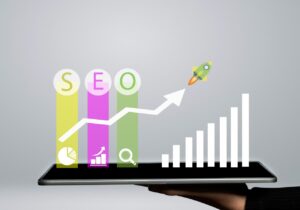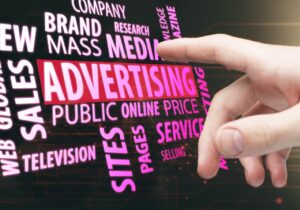Motion graphics and animation both use movement, but they’re not the same thing. Motion graphics focus on moving shapes, text, and designs. Animation brings characters and stories to life. Let’s break down motion graphics vs animation and explain what each one is, how they’re different, and when to use which. This way, you’ll know exactly what to use for your project without spending more time looking around online.
What are Motion Graphics?
Motion graphics are like moving graphic design. Think of words, numbers, and shapes that move around to show an idea. You’ve seen them in explainer videos, app tutorials, or animated logos at the start of a video. They don’t tell a story. They just help make things look cool and easy to understand. They’re super clean, quick, and perfect when you need to get a message across fast. Motion graphics Phoenix are all about facts, not feelings.
What are Animations?
Animation is what you see in cartoons, movies, or video games. It uses drawings or 3D models to show movement, like a person running or a dog wagging its tail. Animation tells a story. It has characters, emotions, and scenes. Some animations are funny, some are deep, but they always aim to make you feel something. Whether it’s a hand-drawn cartoon or a full 3D Pixar movie, animation takes time and care. Animations bring characters to life and build a world around them.
Motion Graphics vs Animation: The Differences
Here’s where it gets fun. Let’s break down what makes motion graphics vs animation different. We’ll keep it simple and clear.
Purpose
Motion graphics are used to explain products, processes, and services. They’re great for marketing, SaaS videos, app tutorials, and pitch decks. They help brands explain complex ideas using moving visuals and text.
On the other hand, animation is often used in entertainment, education, and storytelling. If you’re building a brand story or character-driven message, animation is the right pick.
In the motion graphics vs animation decision, think: Are you informing or storytelling?
Style
Motion graphics use simple shapes, icons, and typography. The focus is on layout, timing, and clean design. It’s flat or minimalistic, often designed in 2D. You’ve likely seen it in YouTube intros, explainer videos, or tech startup promos.
Animation can include more traditional or cinematic styles. It uses detailed character rigs, smooth transitions, and often a frame-by-frame approach. It’s used in TV shows, games, and commercials that aim to connect emotionally.
Complexity
Motion graphics are built on a grid system and usually follow a storyboard. They use keyframes and transitions to animate objects. The process is faster because it involves fewer elements. Animation includes modeling, rigging, texturing, and rendering, especially in 3D. Even in 2D animation, every movement needs individual frames or interpolated sequences.
So if your project needs speed and budget control, go with motion graphics. For character animation or a full cinematic feel, animation is the better route.
Tools Used
Motion graphics are mostly created using:
- After Effects
- Adobe Illustrator (for assets)
- Cinema 4D for 3D elements
These tools integrate easily and are ideal for motion design workflows.
Animators might use:
- Toon Boom Harmony for 2D
- Blender and Maya for 3D
These tools are built for frame-by-frame control and complex rigging.
When thinking about motion graphics vs animation, the software stack often determines the timeline, budget, and technical requirements.
Storytelling
Motion graphics aim to inform. They’re great for product demos, onboarding videos, KPI breakdowns, or service explainers. You’ll see motion graphics in industries like fintech, healthcare, and SaaS.
Animation is ideal for story-driven content. It can carry a plot, voiceovers, emotional arcs, and humor. It’s used for brand storytelling, children’s content, and long-form campaigns.
If your content needs a character to speak and feel real, animation wins.
Time Investment
Motion graphics projects can be turned around in 1 to 3 weeks. They rely on templates, libraries, and repeatable systems. This makes them fast and scalable.
Animation takes much longer. A single minute of animation can take 3–4 weeks or more, depending on style and detail. It’s labor-intensive and requires multiple steps: concepting, keyframing, cleanup, and sound. Choose based on your deadline and how deep you want to go.
Use Cases
Let’s see when to use each one and motion graphics vs animation examples.
Motion graphics are best for quick, visual communication. You can use them for:
- Business presentations and pitch decks
- YouTube intros and branded stingers
- App UI walkthroughs and product tutorials
- Social media ads and reels
- Explainer videos for SaaS, fintech, or e-commerce
- Event promotions and animated flyers
- Infographics and data visualization
- Web banners and hero animations
Animations are best for stories, emotion, and character-driven content. Use them for:
- Commercials and brand storytelling
- Educational video series
- Product storylines with characters
- Children’s content and cartoons
- Corporate training and e-learning modules
- Healthcare and wellness videos
- Gaming promos and cinematic trailers
- Brand mascots in motion
Which is Better, Animation or Motion Graphics?
Here are the differences between motion graphics vs animation in a nutshell:
Motion Graphics | Animation | |
Purpose | Explain ideas quickly | Tell a story or show emotion |
Style | Clean, modern, flat shapes and icons | Detailed, expressive, includes characters |
Complexity | Simple, fast to produce | More detailed, time-consuming |
Tools | After Effects, Cinema 4D | Blender, Maya, Toon Boom |
Storytelling | No real story or characters | Full narratives with characters |
Time | Days to weeks | Weeks to months |
Use Cases | Ads, UI, explainer videos | Cartoons, games, character ads |
Expert Motion Graphics for Marketing in Phoenix, Arizona
If you’re in Phoenix and want your brand to stand out, motion graphics can help. They look clean, modern, and professional. At Wise Advertisement, we design smart, fast, and eye-catching motion graphics that get your message across clearly.
So, if you are stuck between choosing motion graphics vs animation, look at your goal and choose what fits your goal. And if that’s motion graphics for your business, we’ve got your back.
Contact us today for a FREE consultation. Let’s bring your ideas to life.
FAQs
What is the difference between 2d animation vs motion graphics?
2D animation has characters and storylines. Motion graphics focus on moving text and shapes, not stories.
Which is better, 3d animation vs motion graphics?
3D animation is great for full characters and scenes. Motion graphics are better for quick, clear messages.
Are motion graphics animation?
Yes, but they’re a simpler kind. They don’t have characters or a story.
What's the difference between graphics and animation?
Graphics are still images. Animation means that the images move.
What's the difference between an animator and a motion designer?
An animator works with characters and stories. A motion designer moves text and shapes to explain ideas.





